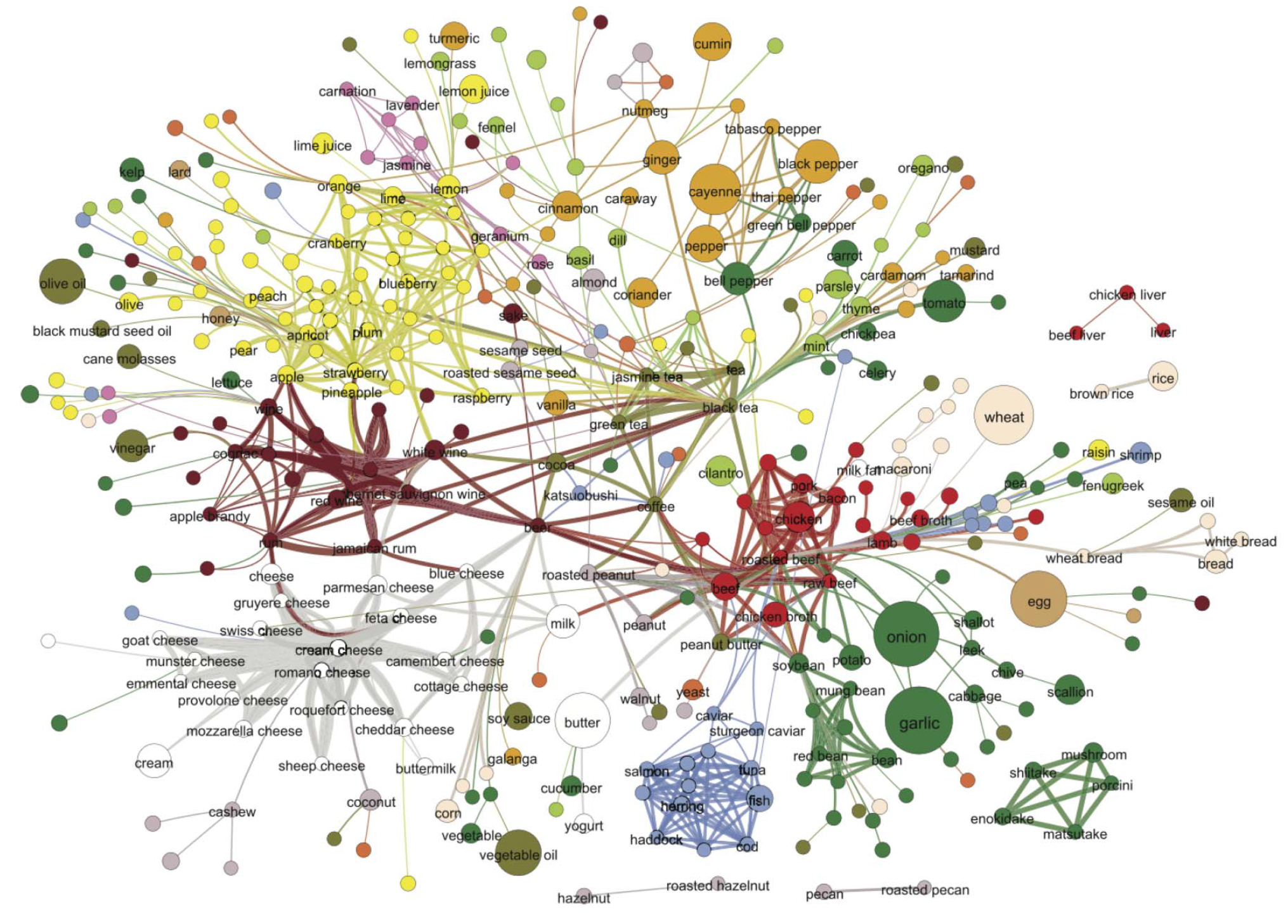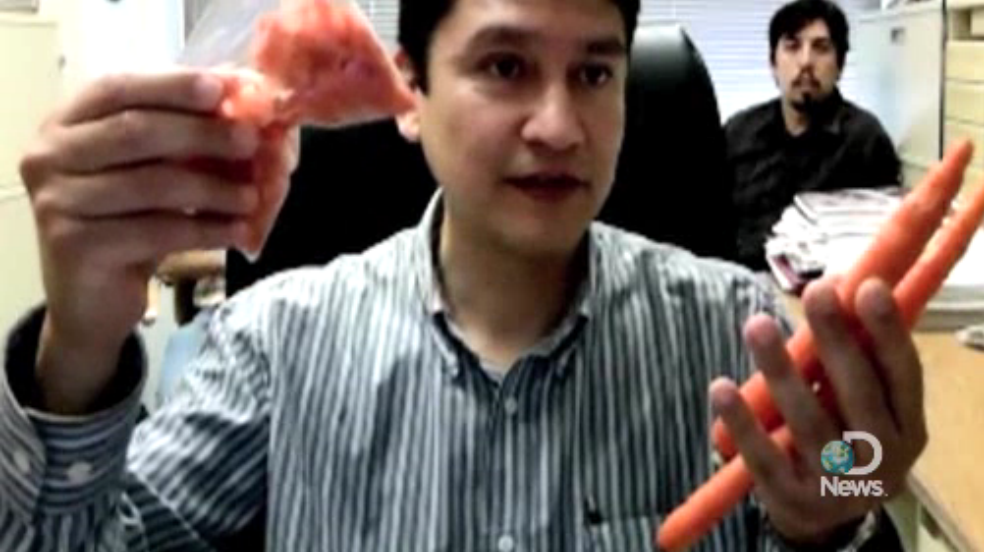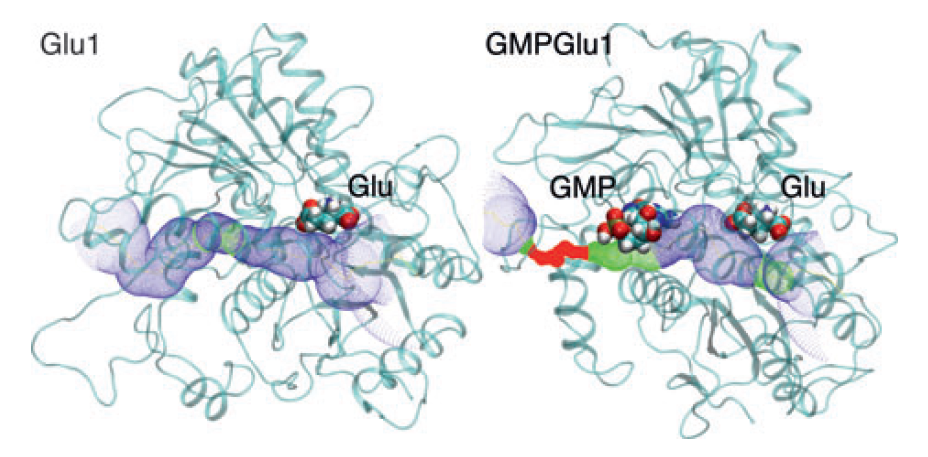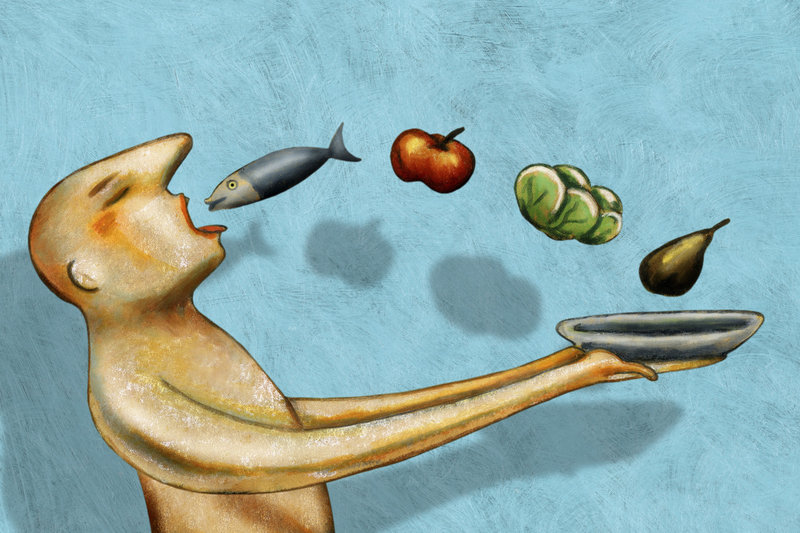The Flavor Network
Physicist Albert-László Barabási likes making connections. By studying networks, Barabási and his Northeastern University research group improve our understanding of everything from the internet to human disease.
Now Barabási and colleagues are using networks to learn more about the way we eat. In a paper published in Scientific Reports, Barabási’s research team posed the question:
“Are there any quantifiable and reproducible principles behind our choice of certain ingredient combinations and avoidance of others?”
In particular, the researchers call the food pairing hypothesis into question. First imagined in 1992 by chefs Heston Blumenthal and François Benzi, the food pairing hypothesis states that ingredients will work well together in a dish if they share similar flavors. Following this logic, chefs have come up with crazy new food combinations like Blumenthal’s infamous concoction of white chocolate and caviar.
Thanks to the efforts of food scientists around the world, we now have extensive information available about the many chemical compounds responsible for giving different foods their distinctive smells and tastes. Armed with this information, Barabási’s team created the flavor network, a giant web of ingredients linked by their shared flavor compounds.
Just as the food pairing hypothesis would predict, the researchers found that North American and Western European cuisines indeed favor ingredient combinations with many shared flavor compounds. The researchers also found, however, that East Asian and Southern European cuisines tend to avoid pairing ingredients with shared flavor compounds. Soy sauce, scallions, and sesame oil, for example, share hardly any flavor compounds but are commonly combined in East Asian cuisine.
These unexpected findings fundamentally question our previous notion of flavor pairing. Although the food pairing hypothesis still holds for some cuisines, it appears there are many more desirable flavor combinations available than previously imagined. As researchers continue to examine a wider variety of ingredients and cuisines, we will be able to build even larger, more robust flavor networks to gain insight into the fundamental principles behind our ingredient pairing preferences.
Such flavor networks will also benefit the next generation of “creative” computers. By combining our current knowledge of flavor networks with computer learning, scientists at IBM are now creating adaptive computer systems that will “learn” to create desirable and innovative food combinations. One day, these computers could help create better school lunches or design menus that meet strict dietary restrictions without sacrificing great flavor.
Of course, there’s more to cooking than lists of flavor compounds and networks of ingredients. Factors like color and texture can have play equally important roles in the palatability of a dish. It therefore seems unlikely that a computer will ever be able to replace the creativity and aesthetic prowess of human chefs. But then again, did anyone expect a computer to win Jeopardy?
 About the author: Liz Roth-Johnson is a Ph.D. candidate in Molecular Biology at UCLA. If she’s not in the lab, you can usually find her experimenting in the kitchen.
About the author: Liz Roth-Johnson is a Ph.D. candidate in Molecular Biology at UCLA. If she’s not in the lab, you can usually find her experimenting in the kitchen.








